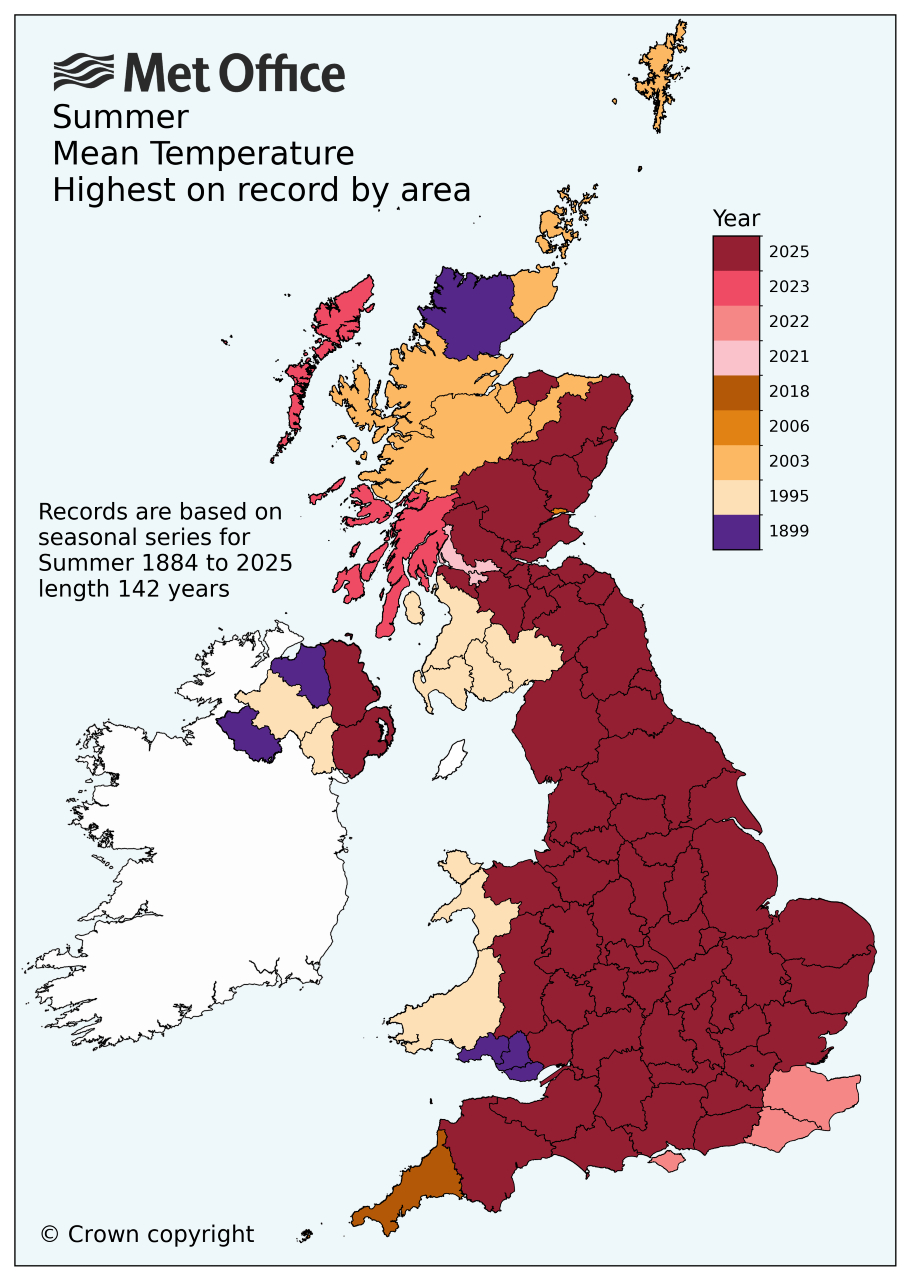The UK’s mean temperature from 1 June to 31 August stands at 16.10C, which is 1.51C above the long-term meteorological average. This surpasses the previous record of 15.76C, set in 2018, and pushes the summer of 1976 out of the top five warmest summers in a series dating back to 1884.
Analysis by Met Office climate scientists has also shown that a summer as hot or hotter than 2025 is now 70 times more likely than it would be in a ‘natural’ climate with no human caused greenhouse gas emissions.
Met Office scientist Dr Emily Carlisle said: “The persistent warmth this year has been driven by a combination of factors including the domination of high-pressure systems, unusually warm seas around the UK and the dry spring soils. These conditions have created an environment where heat builds quickly and lingers, with both maximum and minimum temperatures considerably above average.”
Summer 2025 has seen four heatwaves, each relatively short-lived and interspersed with near-average conditions. The highest temperature recorded was 35.8C in Faversham, Kent. This is just below the peak temperature of 35.9C recorded in 1976 and also below the UK’s all-time high of 40.3C, set in July 2022.
Head of climate attribution at the Met Office, Dr Mark McCarthy, said: “Our analysis shows that the summer of 2025 has been made much more likely because of the greenhouse gases humans have released since the industrial revolution. In a natural climate, we could expect to see a summer like 2025 with an approximate return period of around 340 years, while in the current climate we could expect to see these sorts of summers roughly 1 in every 5 years.”
Rainfall was also below average, with provisionally just 84 per cent of the long-term seasonal average recorded. However, rainfall has varied significantly across the UK with central, southern and eastern parts of England and Wales especially dry, whilst north-western parts of the UK, especially Scotland, have been much wetter.
© 2019 Perspective Publishing Privacy & Cookies







Recent Stories